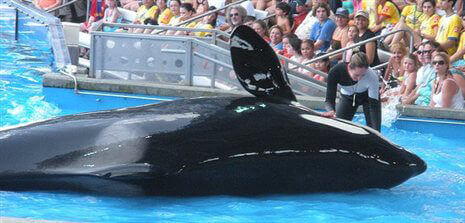Conflicting Details of SeaWorld Death Emerge
On day four of SeaWorld’s appeal, Shana Groves, a SeaWorld senior trainer who was bitten on the thigh by an orca during a performance five years ago, testified that she had completed an incident report as required by the marine park and was surprised to learn that the attack was one of the many episodes left out of the corporate incident log that SeaWorld had provided to the Occupational Safety and Health Administration.
When she was bitten, Groves was in a position similar to that of Dawn Brancheau when she was attacked by Tilikum. Groves, who transferred out of Shamu Stadium to work with sea lions and otters after Brancheau’s attack, broke down in tears when showed a photo of her and Tilikum.
Jan Topoleski, a former SeaWorld trainer who was acting as Brancheau’s “spotter” at the time Brancheau was attacked, then recounted the circumstances surrounding Brancheau’s death. Topoleski’s testimony that Tilikum grabbed Brancheau by her ponytail was at odds with that of a SeaWorld security guard who had testified earlier that he watched Brancheau be pulled in the water by her arm. Topoleski conceded that he did not see Brancheau’s hair in Tilikum’s mouth or Brancheau pulled underwater by her hair. The supposed safety procedures that Topoleski followed were unable to free Brancheau from Tilikum’s jaws. Like Groves, Toploleski stopped working with orcas shortly after the attack.
When the government called Dr. David Duffus, a professor at the University of Victoria in British Columbia, as an expert witness to discuss the predatory nature and inherent unpredictability of orcas, Duffus said that he was “at a loss” as to why Brancheau was permitted to lie in shallow water at Tilikum’s side, holding his pectoral fin, knowing that he had a history of attacks. “Dealing with a large predatory animal and not expecting it to behave like a predator, I don’t think that’s wise,” he said. Duffus questioned whether SeaWorld’s allegations that trainer injuries were rare were a sufficient reason to permit trainers to be in close proximity with orcas, as even if it happens once in a million times, if that millionth time is a catastrophe, then it “goes beyond probability.”
My verdict is in: Humans should not interact with orcas, and SeaWorld puts its trainers at risk by allowing them to have close contact with dangerous, unpredictable animals. But stay tuned to find out the outcome of the hearing.
Written by Heather Moore

